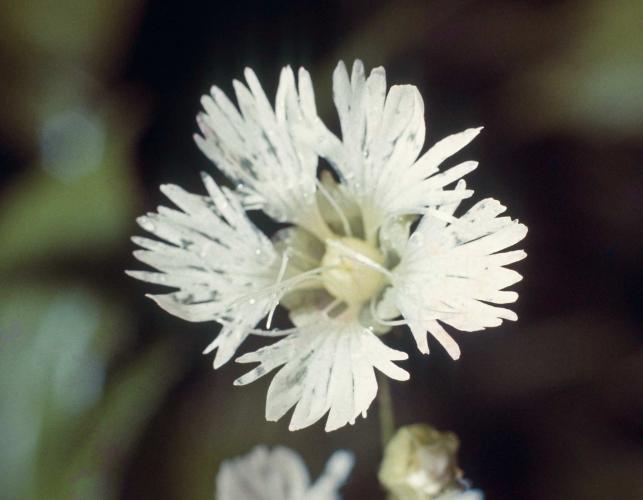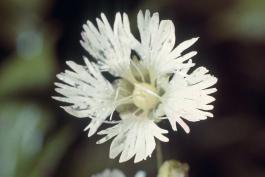
A perennial with several stiff stems having short, soft hairs. Flowers in a loose panicle, subtended by a pair of small, leaflike bracts, with a cup-shaped calyx from which 5 white, finely fringed petals protrude. Stamens are long and slender. Blooms June–September. Leaves mostly in whorls of 4, lanceolate to oval-lanceolate, sessile, opposite, to 3 inches long.
Height: usually 2½ feet.

Statewide.
Habitat and Conservation
Occurs on dry, wooded uplands and slopes, bottomland forests, savannas, bottomland prairies, banks of streams and rivers, margins of ponds and lakes; also fencerows, railroads, and roadsides.
Human Connections
Native Americans made a poultice from the roots for treating sores. With its unusual petals and interesting whorled leaves, this native wildflower should be considered for the home garden. It is in the same family as carnations and pinks.
Ecosystem Connections
Moths are the major pollinators and are attracted by the flowers’ nectar. The flowers open fully at nighttime and usually close at midday. Not many mammals browse the foliage due to bad-tasting, somewhat toxic chemicals in the plant’s tissues.
























